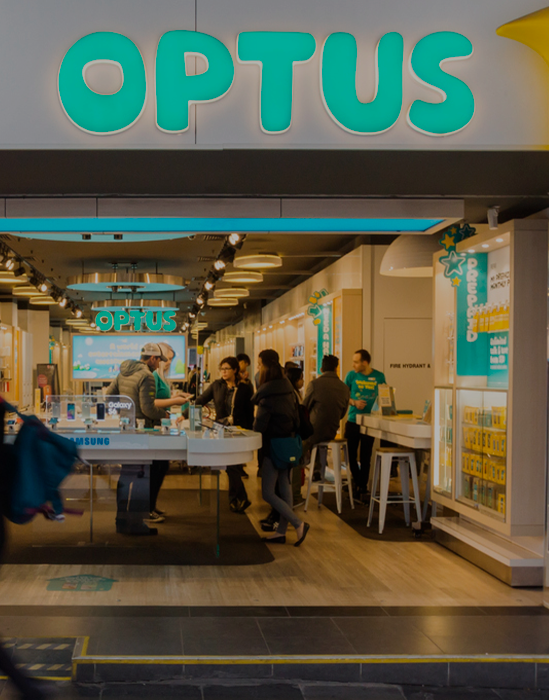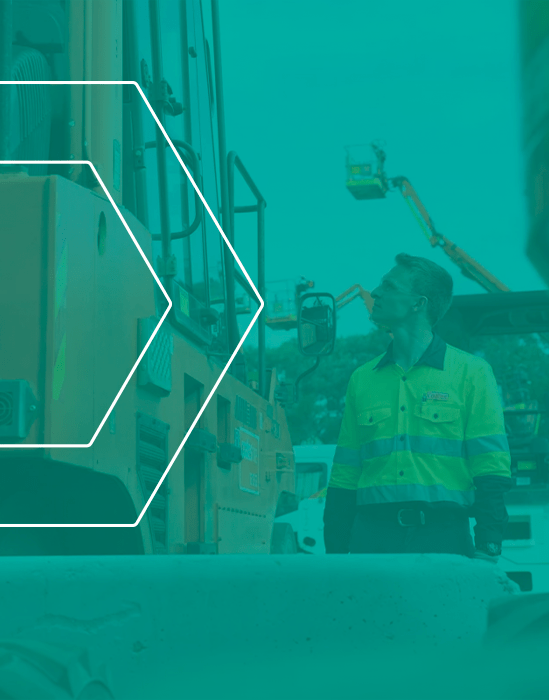
Customer Experience and Service Design: perfect combination
Transform Interactions into Competitive Advantage
Exceptional customer experiences don't happen by accident; they're deliberately designed with intention, empathy, and a clear connection to business outcomes.
Customer experience and service design transform fragmented interactions into seamless journeys that drive both customer satisfaction and commercial success.
We can help you cut through complexity with customer experience and service design that delivers clarity, prioritises investment, and proves ROI.
What we uncover
We uncover the real issues holding back your customer experience and business performance.
Independent assessment of your current customer experience and service design operations
Insights into customer expectations, pain points, and missed opportunities
Clear evidence on where to focus to reduce waste .
What we create
We create practical service design advice and strategies that turn insight into action.
A service design strategy aligned with your business goals and customer needs
Roadmaps that prioritise high-value improvements
Service models and frameworks that balance customer impact with operational efficiency
What it delivers
We help you move from strategy to results, with measurable outcomes you can trust.
Hands-on service blueprints to implement recommendations quickly and effectively
Service Delivery frameworks that track performance and prove the value of investment
Governance and measurement tools to sustain improvement over time
Ready to work with a CX consultant who delivers measurable impact?
Book a session with our team to uncover opportunities, create a clear strategy, and turn insight into results.
Areas of expertise
Human Centred Research
Drive innovation with human-centred research that places real customer needs at the heart of design. By combining qualitative insights with proven customer experience design methods, we ensure every product and service resonates deeply with your audience, building loyalty and long-term value.
Service Design & Innovation
Reimagine value delivery through customer centric design and innovation. From redesigning key processes to introducing breakthrough experiences, we combine creativity with evidence-based frameworks, ensuring your experience design is efficient, impactful, and memorable at every touchpoint.
Customer Journey Mapping
Uncover opportunities with customer journey mapping that highlights pivotal touchpoints and pain points. Our CX design approach transforms these insights into actionable strategies, helping you craft seamless journeys that enhance satisfaction, reduce friction, and accelerate business growth.
Future State Experience Design
Stay ahead of customer expectations with future state experience design. By anticipating emerging behaviours and market shifts, we help you craft future-ready CX solutions that exceed standards, set benchmarks in your industry, and ensure your customer experience design remains competitive.
Customer Insights
Harness actionable customer insights to shape your design decisions with clarity and precision. We connect data, behaviour, and feedback into a clear narrative, ensuring every cx design initiative aligns with your customers’ evolving needs and expectations.

The Business Case for Intentional Experience Design
Organisations that invest in structured customer experience and service design see measurable improvements across multiple business metrics. Companies with superior CX design generate 1.7 times more revenue growth than competitors while achieving 1.9 times higher employee engagement rates.
Strategic Business Benefits:
Operational Efficiency: Well-designed services reduce customer effort, minimise support volume, and streamline internal processes, typically achieving 15-25% operational cost reductions
Revenue Growth: Intentionally designed experiences increase conversion rates, customer lifetime value, and referral generation through improved satisfaction and reduced friction
Competitive Differentiation: In markets where products become commoditised, exceptional service design creates sustainable competitive advantages that competitors struggle to replicate
Risk Mitigation: Proactive experience design prevents costly customer service escalations, negative reviews, and churn that can significantly impact brand reputation
Core Elements of Customer Experience and Service Design
Customer Research and Journey Mapping
Service design begins with a comprehensive understanding of customer needs, behaviours, and pain points across the entire relationship lifecycle. This involves ethnographic research, journey mapping, and behavioural analysis that reveal moments of truth and opportunities for improvement.
Effective journey mapping goes beyond documentation to identify specific business impact of friction points and prioritise improvements based on customer value and commercial outcomes.
Service Blueprint Development
Service blueprints visualise the complete service ecosystem, including customer-facing interactions, behind-the-scenes processes, and supporting technology systems. This comprehensive view enables organisations to identify process improvements that enhance both customer experience and operational efficiency.
Blueprint development ensures that experience improvements are feasible within organisational constraints and resource limitations.
Co-Design and Prototyping
Modern service design involves customers and employees in the solution development process, ensuring that new experiences are both desirable and practical. Rapid prototyping and testing methods validate concepts before full implementation, reducing risk and ensuring market fit.
Co-design approaches build internal buy-in while ensuring solutions address real customer needs rather than perceived problems.
Customer Experience & Service Design FAQs
What is customer experience and service design?
Customer experience and service design is a systematic approach to creating, testing and optimising every interaction between customers and your organisation. It combines deep customer understanding with strategic business thinking to design services that are simpler, more human and more valuable for both customers and the business. Rather than focusing on isolated touchpoints, it looks at the entire relationship and identifies friction and opportunities across all channels.
How can customer experience and service design benefit our organisation?
Organisations that invest in intentional experience and service design see improvements across revenue, efficiency and customer loyalty. Well-designed services reduce customer effort, streamline internal processes and minimise support volume. At the same time, better experiences increase conversion, customer lifetime value and referrals, while protecting brand reputation by preventing negative experiences and churn.
What are the core elements of your service design approach?
Our approach typically includes customer research and journey mapping, service blueprint development, co-design and prototyping, and practical implementation support. We start by understanding customer needs and current journeys, then map the service ecosystem and design solutions with your teams and customers. Finally, we support implementation, change management and optimisation so designed experiences translate into consistent delivery.
Which industries can benefit from service design?
Service design is valuable wherever customer journeys are complex or high stakes. We work with organisations in financial services, healthcare, retail and e-commerce, technology, government and professional services. In each case, service design helps simplify experiences, reduce friction and create integrated journeys across digital and human touchpoints.
How do you measure the success of customer experience and service design?
Success is measured across customer, operational and commercial metrics. We track improvements in NPS, satisfaction and effort scores, alongside changes in efficiency, error rates and resource utilisation. We also connect service design initiatives to business outcomes such as revenue growth, retention, market share and employee engagement, so you can see the full impact of your investment.
The Business Case for Intentional Experience Design
Organisations that invest in structured customer experience and service design see measurable improvements across multiple business metrics. Companies with superior CX design generate 1.7 times more revenue growth than competitors while achieving 1.9 times higher employee engagement rates.
Strategic Business Benefits:
Operational Efficiency: Well-designed services reduce customer effort, minimise support volume, and streamline internal processes, typically achieving 15-25% operational cost reductions
Revenue Growth: Intentionally designed experiences increase conversion rates, customer lifetime value, and referral generation through improved satisfaction and reduced friction
Competitive Differentiation: In markets where products become commoditised, exceptional service design creates sustainable competitive advantages that competitors struggle to replicate
Risk Mitigation: Proactive experience design prevents costly customer service escalations, negative reviews, and churn that can significantly impact brand reputation
The Service Design Process
Discovery and Current State Analysis
The process begins with a comprehensive analysis of existing customer journeys, operational processes, and business outcomes. This includes customer interviews, employee feedback, operational data analysis, and competitive benchmarking to establish baseline performance.
Discovery reveals the gap between intended and actual customer experiences while identifying quick wins and strategic improvement opportunities.
Design and Solution Development
Based on discovery insights, collaborative design sessions develop solutions that address identified pain points while supporting business objectives. This phase encompasses concept development, prototyping, and iterative refinement, informed by customer and stakeholder feedback.
Solution development balances customer needs with operational feasibility and business constraints.
Testing and Validation
Proposed solutions undergo rigorous testing through pilot programs, user testing, and stakeholder validation to ensure their effectiveness. This ensures that new experiences deliver intended outcomes before full-scale implementation.
Testing validates both customer acceptance and operational feasibility while identifying refinements needed for successful deployment.
Implementation and Optimisation
Successful service design includes comprehensive implementation support, including process documentation, staff training, technology integration, and performance monitoring systems that ensure sustained improvement.
Post-implementation optimisation uses customer feedback and performance data to refine and improve service experiences continuously.
Service Design Applications Across Industries
Financial Services
Banks and financial institutions utilise service design to simplify complex product offerings, streamline onboarding processes, and foster more transparent customer interactions that encourage trust while ensuring regulatory compliance.
Healthcare
Healthcare organisations apply service design principles to improve patient experiences across the care continuum while maintaining clinical quality and operational efficiency requirements.
Retail and E-commerce
Retailers leverage service design to create seamless omnichannel experiences that integrate online and offline touchpoints while optimising conversion and customer lifetime value.
Technology and Software
Technology companies use service design to improve user onboarding, reduce support volume, and increase product adoption through more intuitive and helpful customer experiences.
Professional Services
Service firms apply design thinking to client engagement processes, project delivery methods, and communication approaches that differentiate their offerings in competitive markets.
Measuring Service Design Success
Customer Experience Metrics
Track improvements in Net Promoter Scores, Customer Effort Scores, and satisfaction ratings to measure customer perception of experience improvements. Successful service design typically achieves 20-30% improvement in customer satisfaction metrics.
Operational Performance Indicators
Monitor changes in service delivery efficiency, error rates, and resource utilisation to demonstrate operational benefits of improved service design. Well-executed projects show 15-25% improvement in operational efficiency.
Business Impact Measurement
Connect service design improvements to business outcomes, including revenue growth, customer retention, and market share gains. Measure return on investment through increased customer lifetime value and reduced acquisition costs.
Employee Engagement and Capability
Assess improvements in employee satisfaction, confidence, and capability to deliver exceptional service experiences. Effective service design creates positive feedback loops that benefit both customers and employees.
Common Service Design Challenges: Organisational Silos and Resistance
Service design often requires breaking down departmental boundaries and changing established processes, which can create resistance from stakeholders who are comfortable with current approaches.
Technology and System Constraints
Existing technology systems may not support optimal service experiences, requiring a careful balance between ideal design and technical feasibility within budget constraints.
Measurement and ROI Demonstration
Connecting service design improvements to measurable business outcomes requires sophisticated measurement frameworks and patience for results to materialise over time.
Sustaining Change and Continuous Improvement
Maintaining service design improvements requires ongoing commitment, training, and optimisation that extends beyond initial implementation phases.
The Future of Customer Experience and Service Design
Digital Integration and Automation
Service design is increasingly incorporating digital tools, AI capabilities, and automation technologies that enhance, rather than replace, human interactions while maintaining service quality.
Predictive and Proactive Service
Advanced analytics and customer intelligence enable proactive service design that anticipates customer needs and prevents problems before they impact customer experience.
Sustainability and Social Impact
Modern service design considers environmental and social impact alongside customer satisfaction and business outcomes, creating triple-bottom-line value.
Ecosystem and Partnership Design
Service design expands beyond individual organisations to include partner ecosystems and collaborative service delivery models that provide comprehensive customer solutions.
Transform Your Service Delivery with Proto Partners
Proto Partners brings proven expertise in customer experience and service design to organisations ready to move beyond fragmented interactions toward intentionally designed customer relationships. Our approach combines in-depth customer research with practical implementation support, delivering measurable business results.
Why Choose Proto Partners for Service Design?
Our team understands the unique challenges facing Australian organisations and provides practical, culturally relevant solutions that work within local business contexts. We combine strategic thinking with hands-on implementation support that ensures designed experiences translate into consistent delivery.
Ready to Design Services That Drive Results?
Contact Proto Partners today to discover how customer experience and service design can transform your customer relationships and drive measurable business growth. Our consultation process identifies specific opportunities within your organisation and develops practical roadmaps for service excellence.
Schedule Your Service Design Consultation: Take the first step toward intentionally designed customer experiences with Proto Partners' strategic consultation. We'll assess your current service delivery and develop recommendations that align customer satisfaction with business objectives.
Design experiences that work. Partner with Proto Partners to create customer interactions that drive loyalty, efficiency, and growth through intentional service design.
Service design extends beyond concept development to include practical implementation support, staff training, and organisational change management. This ensures that designed experiences translate into consistent delivery across all customer touchpoints.
Successful implementation requires alignment between service design, operational processes, and technology systems.
The Service Design Process
Discovery and Current State Analysis
The process begins with a comprehensive analysis of existing customer journeys, operational processes, and business outcomes. This includes customer interviews, employee feedback, operational data analysis, and competitive benchmarking to establish baseline performance.
Discovery reveals the gap between intended and actual customer experiences while identifying quick wins and strategic improvement opportunities.
Design and Solution Development
Based on discovery insights, collaborative design sessions develop solutions that address identified pain points while supporting business objectives. This phase encompasses concept development, prototyping, and iterative refinement, informed by customer and stakeholder feedback.
Solution development balances customer needs with operational feasibility and business constraints.
Testing and Validation
Proposed solutions undergo rigorous testing through pilot programs, user testing, and stakeholder validation to ensure their effectiveness. This ensures that new experiences deliver intended outcomes before full-scale implementation.
Testing validates both customer acceptance and operational feasibility while identifying refinements needed for successful deployment.
Implementation and Optimisation
Successful service design includes comprehensive implementation support, including process documentation, staff training, technology integration, and performance monitoring systems that ensure sustained improvement.
Post-implementation optimisation uses customer feedback and performance data to refine and improve service experiences continuously.
Service Design Applications Across Industries
Financial Services
Banks and financial institutions utilise service design to simplify complex product offerings, streamline onboarding processes, and foster more transparent customer interactions that encourage trust while ensuring regulatory compliance.
Healthcare
Healthcare organisations apply service design principles to enhance patient experiences across the care continuum while meeting clinical quality and operational efficiency requirements.
Retail and E-commerce
Retailers leverage service design to create seamless omnichannel experiences that integrate online and offline touchpoints while optimising conversion and customer lifetime value.
Technology and Software
Technology companies use service design to improve user onboarding, reduce support volume, and increase product adoption through more intuitive and helpful customer experiences.
Professional Services
Service firms apply design thinking to client engagement processes, project delivery methods, and communication approaches that differentiate their offerings in competitive markets.
Measuring Service Design Success
Customer Experience Metrics
Track improvements in Net Promoter Scores, Customer Effort Scores, and satisfaction ratings to measure customer perception of experience improvements. Successful service design typically achieves 20-30% improvement in customer satisfaction metrics.
Operational Performance Indicators
Monitor changes in service delivery efficiency, error rates, and resource utilisation to demonstrate operational benefits of improved service design. Well-executed projects show 15-25% improvement in operational efficiency.
Business Impact Measurement
Connect service design improvements to business outcomes, including revenue growth, customer retention, and market share gains. Measure return on investment through increased customer lifetime value and reduced acquisition costs.
Employee Engagement and Capability
Assess improvements in employee satisfaction, confidence, and capability to deliver exceptional service experiences. Effective service design creates positive feedback loops that benefit both customers and employees.
Common Service Design Challenges
Organisational Silos and Resistance
Service design often requires breaking down departmental boundaries and changing established processes, which can create resistance from stakeholders who are comfortable with current approaches.
Technology and System Constraints
Existing technology systems may not support optimal service experiences, requiring a careful balance between ideal design and technical feasibility within budget constraints.
Measurement and ROI Demonstration
Connecting service design improvements to measurable business outcomes requires sophisticated measurement frameworks and patience for results to materialise over time.
Sustaining Change and Continuous Improvement
Maintaining service design improvements requires ongoing commitment, training, and optimisation that extends beyond initial implementation phases.
The Future of Customer Experience and Service Design
Digital Integration and Automation
Service design is increasingly incorporating digital tools, AI capabilities, and automation technologies that enhance, rather than replace, human interactions while maintaining service quality.
Predictive and Proactive Service
Advanced analytics and customer intelligence enable proactive service design that anticipates customer needs and prevents problems before they impact customer experience.
Sustainability and Social Impact
Modern service design considers environmental and social impact alongside customer satisfaction and business outcomes, creating triple-bottom-line value.
Ecosystem and Partnership Design
Service design expands beyond individual organisations to include partner ecosystems and collaborative service delivery models that provide comprehensive customer solutions.
Transform Your Service Delivery with Proto Partners
Proto Partners brings proven expertise in customer experience and service design to organisations ready to move beyond fragmented interactions toward intentionally designed customer relationships. Our approach combines in-depth customer research with practical implementation support, delivering measurable business results.
Why Choose Proto Partners for Service Design?
Our team understands the unique challenges facing Australian organisations and provides practical, culturally relevant solutions that work within local business contexts. We combine strategic thinking with hands-on implementation support that ensures designed experiences translate into consistent delivery.
Ready to Design Services That Drive Results?
Contact Proto Partners today to discover how customer experience and service design can transform your customer relationships and drive measurable business growth. Our consultation process identifies specific opportunities within your organisation and develops practical roadmaps for service excellence.
Schedule Your Service Design Consultation: Take the first step toward intentionally designed customer experiences with Proto Partners' strategic consultation. We'll assess your current service delivery and develop recommendations that align customer satisfaction with business objectives.
Design experiences that work. Partner with Proto Partners to create customer interactions that drive loyalty, efficiency, and growth through intentional service design.














